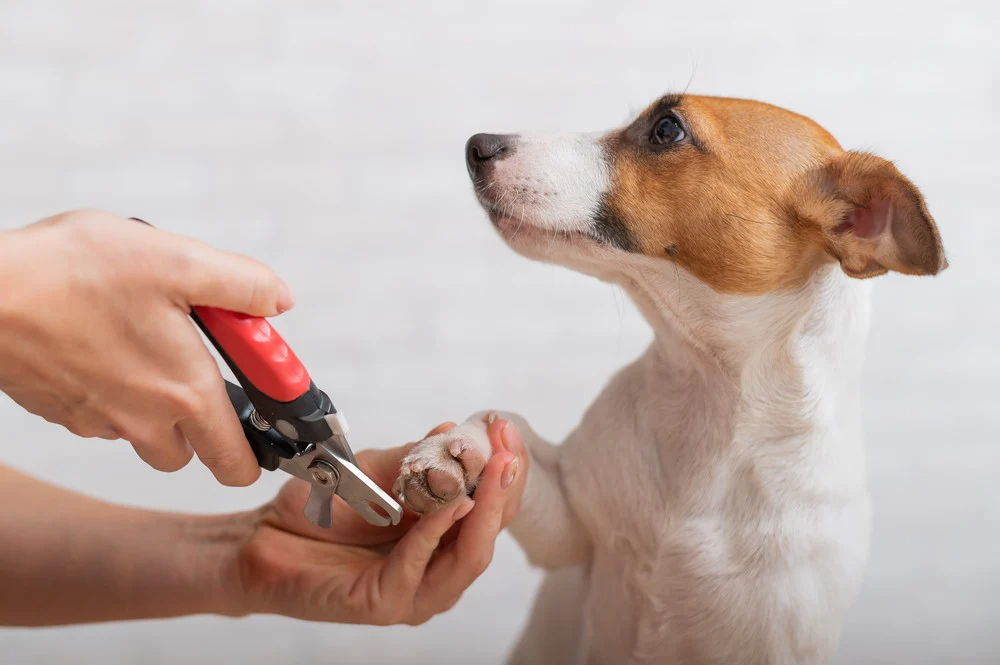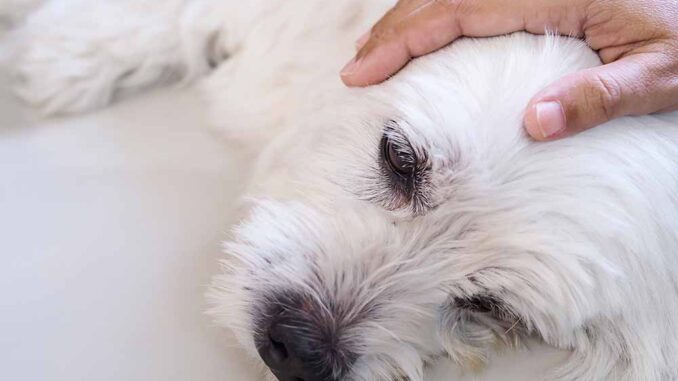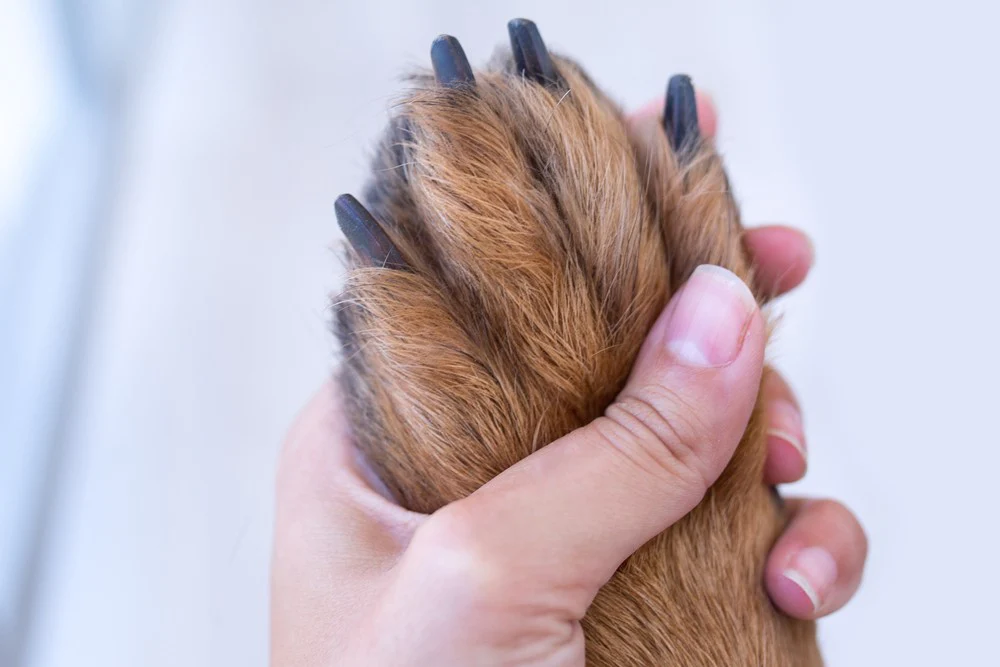
Grooming your dog includes cutting its nails. Keeping your dog healthy includes making sure their nails are trimmed to the right length so they don’t get damaged while walking. If you are uncomfortable trimming your dog’s nails at home, you may take him or her to the groomer or the doctor. These alternatives, although convenient, might increase your dog’s stress levels and the associated costs associated with nail trims.
In the end, every dog owner should know how to trim a dog’s nails to save money each month, as well as to assist reduce their dog’s stress. Nail clipping at home is preferred by many canines since it’s less stressful for them than going to the groomer. Nail clipping is a hassle, particularly if your dog is anxious about it.
It’s best to get your dog used to having his paws petted and nails trimmed at an early age so he may learn that it’s not an unpleasant or fearful experience. When clipping a dog’s nails, some canines may be cooperative while others may need to be held to prevent injury. The frequency with which you should trim your dog’s nails, any special precautions you should take, and the importance of doing so are all things that will be covered in this article.
Choose the Right Type of Nail Clipper
Learning how to trim a dog’s nails may be simplified by using a clipper that is well-suited to your dog’s nails and breed. Nail clippers come in a wide variety of styles and brands, so picking the right one is a matter of personal opinion. However, there are clippers that may be more user-friendly for novices. For trimming your dog’s nails, you may choose from the options listed above.
- Scissor clippers: In appearance, scissor clippers are indistinguishable from common shears. But they’re much more diminutive and feature tiny curled edges in the blade’s center. Clippers like this work well on canine companions of the toy and puppy sizes. As an added bonus, you may have better access to the nails and clip them at the ideal angle using these tools.
- Guillotine clippers: Guillotine clippers are also another popular choice for pet parents because they have a hole indicating where you’ll put the nail. These clippers are great for all types of dog nails. However, they can be more difficult to use, especially if your dog tries to wiggle away while you’re clipping. If your dog is trembling and showing signs of canine anxiety, guillotine clippers may make it more challenging for you to clip their nails because you have to put the nail through a hole in order to cut them.
- Plier clippers: Plier clippers are similar to scissor clippers, but they are stronger thanks to a spring, making them ideal for larger dogs with thick nails.
- Nail grinders: Grinders for the nails are another popular option. Nail clippers might be scary for some dogs, while grinders are the preferred method for others. Since you’ll be filing down the nail rather than cutting it with a nail grinder, the procedure of clipping your dog’s nails will take much longer. The ability to file your dog’s nails rather than cutting them means you can reduce the risk of injury. Clippers may also be used to file your dog’s nails down, reducing their sharpness.
While different clippers may work better on certain dog nail varieties, the ideal clipper ultimately boils down to how well your dog tolerates nail trims. To minimize the time spent clipping your dog’s nails, a scissor-style clipper may be the ideal choice if your pet suffers from anxiety and struggles to stay still while you do it.
Have Everything You Need On Hand
Making sure you have everything you need before you start trimming your dog’s nails is essential. Along with a nail trimmer, you should also keep clotting powder ready just in case you accidentally cut the quick and your dog begins to bleed. The portion of your nail that includes blood vessels is called the “quick,” and you may not be familiar with it. Cutting your dog’s nails too short might cause them considerable discomfort and even bleeding if you touch the quickly.
Cutting your dog’s nails slowly and carefully over time is the greatest approach to prevent injury to the quick. The quick will have developed along with your dog’s long nails, so you shouldn’t cut them too short at first.
Always keep high-value goodies on hand for your dog’s nail-clipping sessions, although they may never become their favorite pastime. When your dog cooperates with you while you’re clipping their nails, thank them with a goodie. Nail trimmings may be a positive experience for your dog if you reward them afterward.
To protect yourself from your dog’s potential attempts to bite during trims, a muzzle may be necessary. To ease your dog’s anxiety, consider bringing a friend to help hold it. While one person is trimming your dog’s nails, the other may touch and reassure your pet.
Figure Out What Your Ideal Job Is
You may test a few various positions to see what works best for your dog while trimming its nails. Most of the time, wrapping your arms around your dog and laying a forearm over its neck is the most effective posture for preventing it from moving its head. Allow your dog to stand on its own, then spread its paws with your thumb while you cut each individual nail.
One option is to have a helper hold the dog while the other person cuts the nails, especially if your dog is a wiggle worm. Putting the dog on its side might help some owners see the quick more clearly and get the nail clipped more quickly.
Take Your Dog’s Paw in Yours Gently
You should be able to comfortably grasp your dog’s paw to trim its nails. If your dog is uncomfortable with having his or her paws touched, you may need to review fundamental obedience training and instructions. This may help them get used to having their paws touched.
If your dog allows you to grasp its paws, then you may proceed with the nail trimming. Then, you’ll want to take up the paw and put your thumb on the toe pad and your forefinger on the top of the toe to lift the skin and expose the whole nail. Then, you can view the whole length of the nail by pushing your thumb into the pad. A more advantageous vantage point may be attained in this manner. Once the nail is exposed and you can get the clipper close to it, you may begin trimming.
Take a Scissor and Trim the Nail’s End
Taking a bite out of your dog’s nails isn’t the best strategy while clipping them. The quick of your dog’s nail should never be cut, thus it is crucial that you understand how to safely and properly trim your dog’s nails. The quick may be more easily seen in nails of a whiter or lighter hue. The quick of a black dog can’t be seen through the nail, making nail trimming more of a challenge. In the absence of a visible quick, it is preferable to start short when trimming your dog’s nails.
To prevent injury to the quick and make sure your dog is comfortable while walking on hard surfaces like concrete or carpet, you should trim your dog’s nails at a 45-degree angle.
The Dewclaw Is Essential, So Keep It in Mind
The dewclaw is the claw that extends skin-to-skin over your dog’s paws. It’s usually more angular and pointed than a normal nail. The dewclaw may be removed by bending it away from your dog’s leg and then removing it using scissors. Your dog’s dewclaw is more harmful than its other nails since it cannot be filed down by walking on concrete.
Pet Reward
The experience of having their dog’s nails clipped should be a happy one, therefore pet owners should always reward their dog with food and praise afterward. Your dog’s activity during nail clippings may need frequent breaks for treats. If your dog does well during nail trims, you may reward them with a snack after you’re done.
Dog Nail Care: Some Pointers

It’s important to learn some tricks to make the process easier for you and your dog and to keep your dog happy so that nail trimmings don’t become a negative experience, especially if your dog hasn’t been trained for the process. Since you now know the basics of dog nail cutting, here are some pointers to keep in mind the next time you go to trim Fido’s claws.
You can use peanut butter as a diversionary tactic.
Anxiety around nail clippers can be reduced by distracting your dog with peanut butter on a lick mat.
Show them the nail clipper
Your dog needs to become accustomed to the nail clippers before you begin trimming his nails at home. Don’t expect to be able to trim your dog’s nails right away; introducing your dog to the clippers is a process that can take many weeks or months. To avoid this, you can use reward-based training to teach your dog that nail clippers equal tasty treats. As your dog approaches the clippers, allow him or her to sniff them and give a treat. Once your dog has mastered this, you can reward him or her whenever their paw touches the clippers.
To get assistance, consult a veterinarian.
If your dog has ever had a bad experience at the groomer’s, like having its quick cut, you can expect them to be extremely anxious about having their nails trimmed. Anxiety medications for dogs may be available from your vet and can help alleviate some of their worries.
Please proceed slowly
It’s crucial to avoid turning nail-trimming into a traumatic experience by taking your time and not rushing. Unfortunately, your dog will not like having its nails cut straight immediately. If you take the effort to teach your dog, it will make life simpler for you and everyone else involved. As long as you keep rewarding your dog after each nail clip, they will eventually relax about having their nails trimmed at home.
A Dog’s Nails Should Be Cut When
In contrast to the monthly maintenance required by some dogs, others may go many months without needing their nails cut. The frequency with which you should clip your dog’s nails is determined by how quickly they grow. You may only need to trim your dog’s nails a few times a year if you regularly walk them on hard concrete or sidewalks.
If you can hear your dog’s nails on the floor while they walk, the nails are probably too long. Tap-dancing canine nails indicate they need to be trimmed.

Why Is it Important to Trim Your Dog’s Nails?
Nail clipping may be a hassle, therefore many dog owners let their pups’ nails grow too long. There are a number of issues that might arise if you don’t maintain your dog’s nails at a healthy length. The tendons in your dog’s feet and legs might be injured if the quick grows too long and your dog is forced to repeatedly place weight on the nail. 4
When your dog’s nails grow too long to walk on comfortably, they may transfer their weight to other parts of their paws to alleviate the pain. This may have long-term consequences for their posture and the health of their bones and joints. Finally, your dog may have trouble getting about the home since long nails limit their grip on hard, slippery floors.4
Closing Remarks
Nail clipping is a vital part of maintaining your dog’s health and happiness. However, you and your dog may choose to avoid the task. With enough practice and the correct equipment, you can teach your dog to accept having its nails cut without protest. Nail clipping might make some dogs anxious, but with the right training and medicine, you can help calm them down.